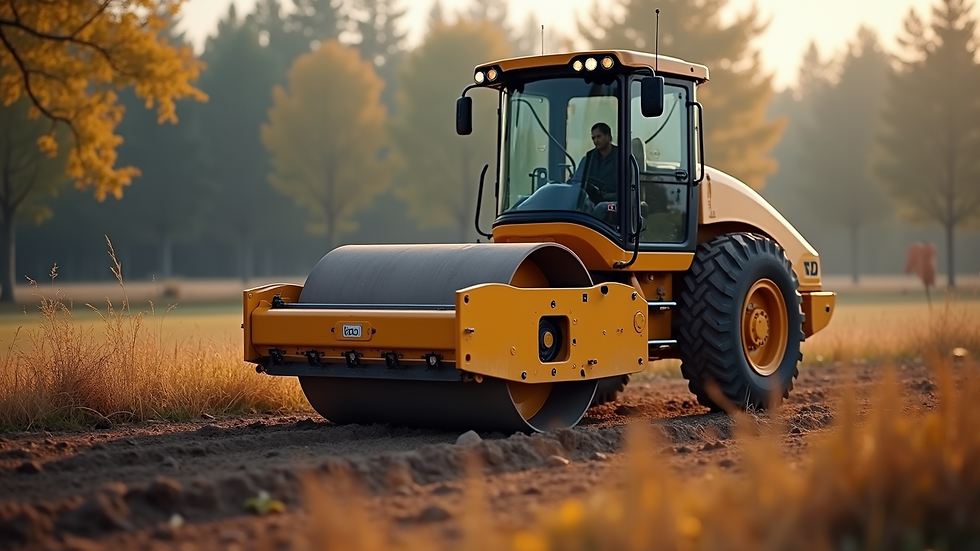Modern Techniques for Effective Asphalt Paving
- setcopaving
- Sep 16
- 3 min read
Asphalt paving has evolved significantly over the years, incorporating new technologies and methods to improve durability, efficiency, and environmental impact. Whether you are involved in road construction, parking lot installation, or driveway paving, understanding modern techniques can help you achieve better results. This article explores the latest advancements in asphalt paving techniques, offering practical insights and actionable recommendations to enhance your paving projects.
Innovations in Asphalt Paving Techniques
Modern paving techniques focus on improving the quality and longevity of asphalt surfaces while reducing costs and environmental footprint. Some of the key innovations include:
Warm Mix Asphalt (WMA): Unlike traditional hot mix asphalt, WMA is produced and applied at lower temperatures. This reduces energy consumption and emissions, making it an eco-friendly option. WMA also improves workability and compaction, leading to a smoother surface.
Recycled Asphalt Pavement (RAP): Using reclaimed asphalt reduces the need for new raw materials. RAP can be mixed with virgin asphalt to create a sustainable and cost-effective paving material without compromising quality.
Polymer-Modified Asphalt: Adding polymers to asphalt enhances its flexibility and resistance to cracking and rutting. This technique is especially useful in areas with extreme weather conditions or heavy traffic loads.
These innovations not only improve the performance of asphalt pavements but also contribute to sustainable construction practices.

Equipment and Technology Advancements in Paving Techniques
The equipment used in asphalt paving has also seen significant improvements. Modern machinery is designed to increase precision, reduce labor, and speed up the paving process. Some notable advancements include:
Automated Pavers: These machines use GPS and laser-guided systems to ensure consistent thickness and smoothness. Automation reduces human error and improves the overall quality of the pavement.
Intelligent Compaction (IC): IC technology uses sensors to monitor compaction in real-time. Operators receive feedback to adjust roller speed and pressure, ensuring optimal density and preventing over-compaction.
Infrared Asphalt Heaters: These devices allow for the repair and reheating of existing asphalt surfaces without complete removal. Infrared heaters soften the asphalt, making it easier to reshape and compact, which extends pavement life.
Investing in advanced equipment can lead to faster project completion and higher-quality results.

Best Practices for Surface Preparation and Layering
Proper surface preparation is critical for the success of any asphalt paving project. Modern techniques emphasize thorough preparation and layering to enhance pavement durability:
Subgrade Stabilization: Before paving, the soil beneath the pavement must be stable and well-compacted. Techniques such as lime or cement stabilization can improve soil strength and prevent future settling.
Tack Coats and Prime Coats: Applying tack coats between layers ensures strong adhesion, preventing delamination. Prime coats are used on granular bases to bind loose particles and improve bonding with the asphalt layer.
Layer Thickness Control: Using precise measurements and automated controls helps maintain consistent layer thickness. This prevents weak spots and ensures even load distribution.
Following these best practices reduces the risk of premature pavement failure and costly repairs.

Environmental and Safety Considerations in Asphalt Paving
Modern asphalt paving techniques also prioritize environmental sustainability and worker safety. Some key considerations include:
Reduced Emissions: Using warm mix asphalt and recycled materials lowers greenhouse gas emissions. Additionally, newer equipment often meets stricter emission standards.
Noise Reduction: Advances in machinery design and paving methods help minimize noise pollution during construction, benefiting nearby communities.
Worker Safety: Automated and sensor-equipped equipment reduces manual labor and exposure to hazardous conditions. Proper training and protective gear remain essential to ensure safety on site.
Incorporating these considerations helps create a safer and more environmentally responsible paving process.
Future Trends in Asphalt Paving Techniques
The asphalt paving industry continues to innovate, with several emerging trends shaping the future:
Smart Pavements: Integration of sensors within asphalt layers to monitor traffic loads, temperature, and structural health in real-time.
Cold Mix Asphalt: Development of cold mix formulas that can be applied without heating, further reducing energy use and allowing for easier repairs.
Sustainable Binders: Research into bio-based and recycled binders aims to replace petroleum-based asphalt, reducing environmental impact.
Staying informed about these trends will help professionals adopt cutting-edge methods and maintain competitive advantages.
For more detailed insights and updates on asphalt paving techniques, exploring expert blogs and industry resources is highly recommended. These sources provide valuable information on the latest tools, materials, and methods to optimize your paving projects.
By embracing modern techniques, you can ensure your asphalt paving projects are efficient, durable, and environmentally friendly. Whether upgrading equipment, improving surface preparation, or adopting sustainable materials, these advancements offer practical benefits for every paving job.





Comments